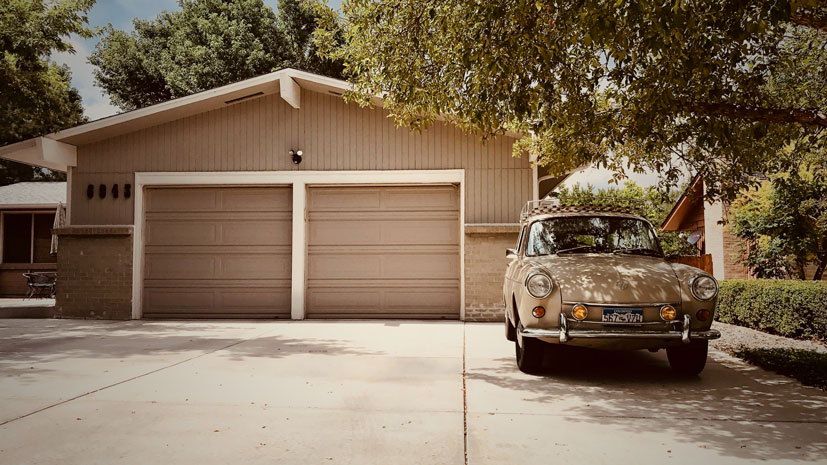The solution to your need for extra space may already be attached to your house! Converting an existing garage is a smaller amount expensive than building an addition—and it is a lot simpler too! A garage conversion is one in all the speediest and most affordable routes to adding floor space: a typical scheme creating a brand new office or playroom can often be completed in little over every week. Plus, of course, you won’t resort to moving to induce a house that suits your family’s needs; so you’ll save on fees for revenue enhancement, solicitors etc. What’s more, unlike a traditional home extension, it won’t eat up any of your garden amenity. A garage conversion also can increase your home’s value. Virgin Money reckons you’ll net around a 10%-20% return by seizing a well-considered project that enhances the usability of your home…
Designing Your Space
The first step with any garage conversion is to conduct an assessment of the present structure, specifically the soundness of the foundations, walls, and roof. This will go a protracted thanks to revealing the extent of works required to form a cushty living environment – so it’s a key a part of the planning stages. If the building is in an especially dilapidated state, it should be cheaper to knock down and replace.
Key Works
The first job is going to be stripping out the most structure, at which point you’ll get the clearest view yet of what’s future – including where you’re presumably to encounter unexpected problems (such as patchy foundations or hidden issues within the walls) that might augment costs. Here are a number of the most considerations:
Floor Slab
In a garage with a flat and dry concrete slab, homeowners don’t have any shortage of flooring options. Tile, whether ceramic or vinyl, holds appeal for its easy installation. It will be laid directly over the slab, farewell because the slab is correctly prepared. This typically entails filling cracks with patching compound, cleaning spills with a degreasing solution, and applying sealer to dam moisture from rising up through the porous concrete. Less affordable and more demanding to the do-it-your selfe are carpeting or hardwood. Both materials require a plywood sub-floor, which suggests the project must begin with patching, cleaning, and sealing the slab. After that, lay down a layer of polyethylene sheeting to further safeguard against moisture. Then attach 3/4-inch plywood to the slab with concrete screws at 16-inch intervals. The carpeting or hardwood is then installed over the plywood, leading to a raised floor height that may have to be managed at the garage entryways.
Infilling the Door
The most common route is to exchange the foremost garage door with conventional walling matching the rest of the building, sort of a masonry infill fully toothed and bonded into the prevailing brickwork. The design stage assessment should identify whether the foundations need upgrading to want the new loads. Planning allowing, you’ll add windows or a glazed gate and introduce more daylight into your new space, which might also help reduce the masses imposed. If your budget will stretch, you’ll even have barely fun with the design – perhaps by going for a very glazed wall.
Doors & Windows
Many who complete a garage conversion ultimately prefer to leave the garage door intact. Other homeowners replace the garage door with a solid or windowed wall, or with a compromise solution, like French doors. As you contemplate the design of your garage conversion, ask yourself whether space encompasses a sufficient number of windows. If you’re getting ready to add any, consider not only natural light and views to the surface but also privacy
Wall Insulation
Integrated garages are usually built to the identical standard because the main house, therefore the walls might not need upgrading. Attached or detached garages of single-skin construction may be insulated internally; usually by erecting stud walling using timbers deep enough to simply accept sufficient insulation. Buildings with cavity walls can have insulation blown into the gap, thus preserving the interior floor space. If you’re going for a part-conversion, retaining a car parking zone, you’ll erect a fully-insulated internal dividing wall that’s designed to produce 30-minute fire protection. This can be drained block-work, or switch to timber stud work lined with pink fire-line plasterboard on the garage side.
Roof Insulation
The simplest thanks to insulating a garage roof is at the loft level. With a pitched covering, 270mm of insulator should be sufficient – 100mm between the joists, and also the rest on top. Warm roof setups, which are insulated at rafter level, are possible and may enable the utilization of roof lights to herald more natural brightness. Flat roofs will be fitted with rigid insulation between and under the ceiling joists, with a ventilation gap above to forestall condensation. If you would like to preserve floor-to-ceiling height, select slim multifoil or PIR (polyisocyanurate) products.
Electric
Once the walls are in, hire a licensed electrician to put in outlets and light-weight switches, likewise as any fixtures you want to mount on, or hang from, the ceiling. (Note that it’s going to be necessary to feature a circuit to your breaker panel.) Of the various reasons to rent knowledgeable to handle the craft in your garage conversion, perhaps most vital is that the pro’s in-depth knowledge of the relevant building codes in your area.
Heating & Cooling
If you’ve got got a forced-air system, the sole (read: most cost-effective) method of heating and cooling your garage conversion is to extend the ductwork from the foremost part of your house. Alternatively, examine radiant floor heating, which operates through the bottom by means of heated water or electrical coils. yet another option is to place in a very mini-split heater and/or cooling. called a ductless system, this technology consists of a wall-mounted unit that pulls from a condenser situated immediately outside the building. As a final set of options, consider the quality amenities for small-space seasonal comfort, namely baseboard heaters, and window air conditioners.
Plumbing
Installing a kitchen, bathroom, wet bar, or utility sink will be the foremost complicated part of a garage conversion. the likelihood is that good that so as to own running water, supply and drain lines will have to be set into the concrete slab. For that reason, it’s informed to handle plumbing issues first, before addressing other features of the project. If you would like to make a restroom but are leery of disrupting the slab, consider an up-flush system, which relies on a macerator (to grind waste) and a pump (to take that waste to your storage tank or sewer). during this setup, supply and return lines are boxed out along the ground, but they almost disappear from view once you’ve got painted and furnished the renovated garage space.
…And finally
The process of a garage conversion passes through a variety of stages from the initial idea, obtaining planning permission (if required), preparing a close design, and getting approval from the local building control. It’s at this stage the hunt for an honest builder starts then the ultimate stage is that the construction process. There are two stages that present the most effective time to confirm a top-quality energy-efficient conversion. this can be the detailed design stage where the right materials and services aren’t only specified but also drawn to point out they’re used together without conflict or compromising an honest fabric performance. The second stage is that the construction process, that the builder is knowledgeable of the materials specified and is fully skilled within the correct installation. this permits for the as-built standards to be up to the look standards. Both these factors will affect the energy efficiency of the conversion and if done correctly will evoke a brand new, sustainable, and cozy habitable space.
Photo by John Paulsen on Unsplash




